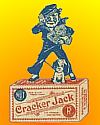
On 16 Jun 1893, Cracker Jack was invented by R.W. Rueckheim, a unique popcorn, peanuts, and molasses confection which he introduced at the World's Columbian Exposition, Chicago's First World Fair.
Today's feature is a little different: it has a recipe for making a cracker jack type candy at home from your own popped corn (1901) and a short description from 1910 of how it was produced at the factory. You can also look at a vintage advertisement for Cracker Jack from 1919.

On 16 Jun 1930, Elmer Sperry died, one of America’s most significant electrical engineers. Today's book pick is: Elmer Sperry: Inventor and Engineer (Johns Hopkins Studies in the History of Technology), by Thomas Parke Hughes, who writes a superb biography of this major American inventor. Sperry obtained more than 350 patents during his lifetime and contributed greatly to the technological changes occurring between 1880 and 1930. He was best known for the Sperry gyrocompass and automatic pilot, and his inventions included arc-light systems, mining machinery, electric automobiles and streetcars, and electrochemical processes. Characteristic of his various inventions were feedback controls which have made automation a fact of life. Sperry was an important contributor in the history of technology, and this book is almost required reading for background of the influences in that field reaching from the 50s to the late 80s.
It is available from Amazon, typically about New from $21.69. Used from $13.36. (As of earlier time of writing - subject to change.)
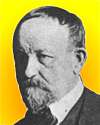 | Mit dem Schwerte der Wissenschaft, mit dem Panzer der Praxis, so wird Deutsche Bier die Welt erringen. With the sword of Science and the armour of Practice, German beer will encircle the world. |
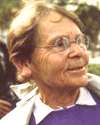 | I was just so interested in what I was doing I could hardly wait to get up in the morning and get at it. One of my friends, a geneticist, said I was a child, because only children can't wait to get up in the morning to get at what they want to do. |
 | To put it crudely but graphically, the monkey who did not have a realistic perception of the tree branch he jumped for was soon a dead monkey—and therefore did not become one of our ancestors. |
| Before you look at today's web page, see if you can answer some of these questions about the events that happened on this day. Some of the names are very familiar. Others will likely stump you. Tickle your curiosity with these questions, then check your answers on today's web page. | |
| Births | |
 | Barbara McClintock, born 16 Jun 1902, was an American scientist whose work on the cytogenetics of maize led her to theorize that genes are transposable—they can move around—on and between chromosomes. McClintock drew this inference by observing changing patterns of coloration in maize kernels over generations of controlled crosses. For her discovery, she was awarded the Nobel Prize in Physiology or Medicine in 1983. What was notable about this woman's award of the Nobel Prize? |
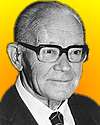 | Georg Wittig, born 16 Jun 1897, was a German chemist who discovered how a family of organic compounds called ylides could form the basis of the Wittig reaction. Because of the Wittig reaction, complex compounds can now routinely be synthesized, such as vitamin A, vitamin D derivatives, steroids, and biological pesticides. What is the result of a Wittig reaction? |
| Deaths | |
 | A German-born American engineer (1912-1977) played a prominent role in all aspects of rocketry and space exploration, first in Germany and, after World War II, in the United States. Can you name this scientist? |
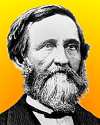 | Crawford Williamson Long (1815-1878) was an American physician who was the first in the U.S. to use a certain compound as an anesthetic in surgery. On 30 Mar 1842, practicing in rural Georgia, he first used this anesthetic while he removed a tumour from a patient’s neck. What compound did he use as an anesthetic? |
| Events | |
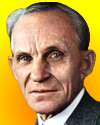 | On a certain 16 Jun, after some false starts, incorporation papers were signed by ten investors. Henry Ford was named in the paperwork as Vice President of the Ford Motor Company. He contributed the benefits of his patents, knowledge and engine. In what decade was the Ford Motor Company incorporated? |
 | On 16 Jun 1903, pharmacist Caleb D. Bradham’s soft drink trademark was registered with the U.S. Patent Office. Pharmacies at the time were favorite gathering places. He had created this soft drink in the summer of 1898, to increase business at his store’s soda fountain. He mixed carbonated water, sugar, vanilla, oils, pepsin, and kola nut extract. Customers at in his pharmacy in New Bern, N.C., liked the beverage and called it Brad’s Drink. What is the trademark by which the drink is now known? |
Fast answers for the previous newsletter for June 15: Atlantic Ocean • skyscraper • Joseph Dixon • Charles Goodyear • the decade including the year 1752 • celluloid.
 If you enjoy this newsletter, the website, or wish to offer encouragement or ideas, please send feedback by using your mail reader Reply button.
If you enjoy this newsletter, the website, or wish to offer encouragement or ideas, please send feedback by using your mail reader Reply button. Your click on a Facebook, StumbleUpon, or other social button on the site webpages is also a welcome sign of appreciation. Thank you for using them.
© This newsletter is copyright 2020 by todayinsci.com. Please respect the Webmaster's wishes and do not put copies online of the Newsletter — or any Today in Science History webpage. (If you already have done so, please remove them. Thank you.) Offline use in education is encouraged such as a printout on a bulletin board, or projected for classroom viewing. Online, descriptive links to our pages are welcomed, as these will provide a reader with the most recent revisions, additions and/or corrections of a webpage. For any other copyright questions, please contact the Webmaster by using your mail reader Reply button.
--
If you do not want to receive any more newsletters, Unsubscribe
To update your preferences and to unsubscribe visit this link
Executive Real Estate Business Class
-
"It was like a man with wings. It wasn't like anything you'd see on TV or in a monster movie." ...
About the publisher
Search This Blog
Blog Archive
-
▼
2021
(585)
-
▼
June
(64)
- On This Day for June 30 - Night of the Long Knives...
- Newsletter for Wednesday 30 June.
- On This Day for June 29 - London's Globe Theatre d...
- Newsletter for Tuesday 29 June.
- On This Day for June 28 - Assassination of Archduk...
- Newsletter for Monday 28 June.
- On This Day for June 27 - Yen made official moneta...
- Newsletter for Sunday 27 June.
- On This Day for June 26 - Opening of CN Tower, Bab...
- Newsletter for Saturday 26 June.
- On This Day for June 25 - Korean War begun, Antoni...
- Newsletter for Friday 25 June.
- On This Day for June 24 - Russia invaded by Napole...
- Newsletter for Thursday 24 June.
- On This Day for June 23 - Battle of Bannockburn, C...
- Newsletter for Wednesday 23 June.
- On This Day for June 22 - Mutiny against Henry Hud...
- Newsletter for Tuesday 22 June.
- On This Day for June 21 - Japanese forces defeated...
- Newsletter for Monday 21 June.
- On This Day for June 20 - Casket Letters found, Ho...
- Newsletter for Sunday 20 June.
- Tonight at 8/7c: Watch ‘Fight the Power’
- On This Day for June 19 - Rosenbergs executed for ...
- Newsletter for Saturday 19 June.
- On This Day for June 18 - War of 1812 begun, Sir P...
- Newsletter for Friday 18 June.
- On This Day for June 17 - Arrest of O.J. Simpson, ...
- Newsletter for Thursday 17 June.
- On This Day for June 16 - First woman in space, Jo...
- Newsletter for Wednesday 16 June.
- On This Day for June 15 - Magna Carta sealed by Ki...
- Newsletter for Tuesday 15 June.
- On This Day for June 14 - First prisoners at Ausch...
- Newsletter for Monday 14 June.
- On This Day for June 13 - Historic meeting between...
- Newsletter for Sunday 13 June.
- On This Day for June 12 - Election of Boris Yeltsi...
- Newsletter for Saturday 12 June.
- Listen Now! Blindspot: Tulsa Burning Podcast
- On This Day for June 11 - Oklahoma City bomber exe...
- Newsletter for Friday 11 June.
- On This Day for June 10 - First “witch” hanged in ...
- Newsletter for Thursday 10 June.
- On This Day for June 9 - Landslide reelection vict...
- Newsletter for Wednesday 9 June.
- On This Day for June 8 - Michelangelo's David inst...
- Newsletter for Tuesday 8 June.
- Action required: Update your HistoryExtra password
- On This Day for June 7 - Lateran Treaty ratified, ...
- Newsletter for Monday 7 June.
- On This Day for June 6 - Normandy Invasion begun, ...
- Newsletter for Sunday 6 June.
- On This Day for June 5 - Start of the Six-Day War,...
- Newsletter for Saturday 5 June.
- On This Day for June 4 - Dunkirk evacuation ended,...
- Newsletter for Friday 4 June.
- Tonight: ‘Alone’ Returns at 9:30/8:30c
- On This Day for June 3 - Pro-democracy protest in ...
- Newsletter for Thursday 3 June.
- On This Day for June 2 - Elizabeth II crowned quee...
- Newsletter for Wednesday 2 June.
- On This Day for June 1 - Debut of CNN, Morgan Free...
- Newsletter for Tuesday 1 June.
-
▼
June
(64)
-
Blogroll
-
About
HistoryFact










0 comments:
Post a Comment